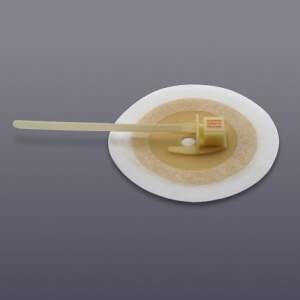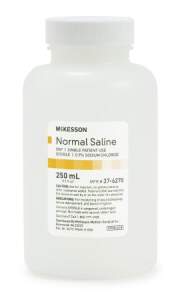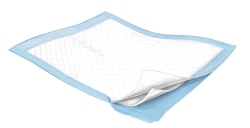A nephrostomy is needed if something blocks the normal flow of urine from the kidneys into the bladder and out the urethra. When urine stays in the kidneys because of this blockage, it can cause damage to these organs. To help drain urine from the kidneys, a nephrostomy tube is placed by a surgeon. The nephrostomy tube is a catheter put through the skin on your back and into the kidney to drain your urine. You may need a nephrostomy tube if you have kidney stones, prostate cancer, pelvic tumors, or damage to your urinary system.
What is the difference between a nephrostomy and a urostomy?
A nephrostomy is an artificial opening (stoma) created between the kidney and the skin, allowing for rerouting the normal flow of urine directly from the upper part of the urinary system.
A urostomy is a surgical procedure that takes a section of the ilium, the last section of the small intestine. It connects it to the ureters from the kidneys for urine diversion. A stoma is created on the abdominal wall, and the open end of the small intestine is pulled through and sutured to the skin. This opening is the new path urine will flow out of the body and into a urine drainage bag for collection.
Can nephrostomy tubes be permanent?
A nephrostomy tube will remain in place depending on each individual’s unique situation. If your doctor feels that an alternative treatment may relieve the blockage, the nephrostomy tube may be temporary. One type of alternative treatment option is to place a stent in the ureter. The stent is a small, flexible, hollow tube, and the ureter is the tube that connects the kidneys to the bladder. The stent holds the ureter open so urine can flow out of the kidneys and into the bladder, and out the urethra.
Your doctor will decide whether the nephrostomy tube may be permanent if the stent option is not suitable. In this case, the nephrostomy tube will need to be cleaned and changed periodically by a surgeon.
How often should a nephrostomy bag be changed?
The nephrostomy tube will be attached to a urine drainage bag. This urine collection bag will either be reusable or disposable (single-use). Disposable drainage bags are thrown away after each use. If you are using a reusable urine drainage bag, it will need to be regularly cleaned for sanitary purposes.
The following are general directions for cleaning a reusable urine drainage bag:
- Make sure you are stocked with reusable urine drainage bags so that you will be able to attach a new bag immediately as you remove the used one for each cleaning.
- Keep an eye on the amount of urine the drainage bag has collected. It is recommended that urine drainage bags be emptied with they are approximately ½ to 2/3 full.
- Detach the drainage bag from the nephrostomy tube and attach a new bag tightly to the nephrostomy tube. While standing over a toilet, open the spout at the end of the used drainage bag and pour the urine out.
- Fill the urine drainage bag halfway with a white vinegar solution that is 1 part vinegar to 3 parts water. Allow the bag to soak for about 30 minutes. Rinse the bag with water and hang it to dry. If the smell of vinegar puts you off, you may use warm soapy water in its place.
- It is recommended that you dispose of reusable bags after one week of use.
How do you check a nephrostomy tube?
The nephrostomy tube comes out of your back, so it is not the easiest to reach on your own. Caring for and checking your nephrostomy tube will require assistance from someone else. Your doctor should provide instructions on how your skin should be cleaned and what type of skin barrier and tape for securing should be used.
 The following general instructions explain how the person who is helping you can check and care for your nephrostomy tube.
The following general instructions explain how the person who is helping you can check and care for your nephrostomy tube.
Gather the items you will need.
- Disposable underpad or bed pad
- Clean washcloths
- Warm water, unscented soap, and medical gloves
- Sterile gauze pads and rolls
- Transparent adhesive dressing or medical tape
- Skin barrier
- Tube attachment device
- Saline solution
- Trash bag
Remove the old bandage, and check the tube entry site.
- Wash your hands with soap and water and put on the medical gloves.
- Have the patient lie on their side on the disposable underpad with the nephrostomy tube entry site facing up.
- Hold the skin beside the nephrostomy tube with one hand and with the other hand, gently remove old bandages or tape and the skin barrier. Pulling in the same direction as hair growth will minimize any pain to the patient. Dispose of the old dressing and skin barrier in a trash bag.
- Take a look around the skin at the entry site of the nephrostomy tube. If there are signs of redness or swelling, there may be an infection. Immediately contact the patient’s doctor.
- The nephrostomy tube should have a black indicator line where it enters the skin. This line helps determine whether or not the tube has moved out of place. If the black indicator line is not next to the skin, contact the patient’s doctor right away. The nephrostomy tube will need to be put back in its proper place by them.
Clean the tube entry site.
- Using the saline solution, wet a couple of the gauze pads. While holding the tube in place to keep it from being pulled out, take a wet gauze pad and wipe around the nephrostomy tube, clearing any material from the skin. Repeat this step with a couple of gauze pads soaked in saline solution.
- Gently pat the skin with a clean washcloth to dry it.
Apply the skin barrier and bandages.
- Take the skin barrier and cut an opening in the center large enough to fit around the nephrostomy tube. Cut a slit from the outside edge of the skin barrier to the center opening to fit around the nephrostomy tube. Place the skin barrier around the nephrostomy tube.
- Use the gauze bandage roll and wrap it around the entry point of the nephrostomy tube to support it and stop it from kinking or bending. Tape the gauze bandage securely in place.
- An attachment device such as the Hollister Vertical Drain Tube Attachment may be placed over the bandages to help keep the nephrostomy tube in place.
- Bring the tubing forward to the front of the patient’s body and tape it to the skin. Careful not to stretch the tube too tight, as this may pull the nephrostomy tube out.
How often should you change the bandage, skin barrier, and tube attachment device?
It is recommended that the bandages around the tube, skin barriers, and tube attachment devices are changed at least every seven days. If your dressings, skin barriers, or attachment devices get dirty or wet, they should be changed right away to prevent infection. If your nephrostomy tube is permanent, the tube needs to be changed every 2 to 3 months. Your doctor should tell you how often you need to have your tube changed.

What problems should you watch for?
The skin around the nephrostomy tube is red, sore, or swollen.
You might have an infection. Wash your hands and clean the skin and nephrostomy tube at the entry site once or twice a day with a saline solution. Change your dressing every day and apply an antibiotic each time. Put dry, sterile gauze over the tube. If the problem does not resolve within a week, contact your doctor who ordered this tube for you.
You experience pain in the middle of your back along with a fever, urine color changes, or the nephrostomy tube is not draining well.
You may have a kidney infection and should call your doctor immediately. Your doctor might want to start you on antibiotics and will likely change your tube right away. To prevent kidney infections in the future, try rinsing your drainage bag with clean water every day. Drink plenty of fluids each day and change your nephrostomy tube every three months.
There is leaking at the entry site of the nephrostomy tube, or no urine is draining into the bag.
Your nephrostomy tube may be partially or entirely out. Use some tape to secure the tube and call your doctor right away. The opening in the skin can close up quickly, and insertion will be more complex and painful. By checking to make sure your tube is secured to your skin and the dressing is securely in place daily, you can help prevent the nephrostomy tube from coming loose and falling out.
You experience pain in your kidney area, there is leaking around the entry site, or there is no drainage in the tube.
You may have a blockage in your nephrostomy tube. Check for any kinks or bends in the tubing. If you don’t find any problems with the tubing, you should contact your doctor immediately before the situation becomes more severe. Your nephrostomy tube will need to be changed. Drinking plenty of water and getting your tub changed every three months can help prevent blockages.
When to contact your doctor
Contact your healthcare provider if:
- The skin around the nephrostomy tube is red, swollen, itches, or has a rash.
- The black indicator mark on the nephrostomy tube has moved away from the entry point on the skin.
- A large amount of urine is draining into the drainage bag over a short period.
- You have little or no urine draining from the nephrostomy tube.
- You are experiencing pain in your lower back or hips.
- There are changes in the color or smell of your urine.
- You have a fever, nausea, or vomiting.
Some of Our Nephrostomy Supplies
If you have any questions about the information provided in this blog or the home delivery medical supplies we carry, our Product Experts are just a phone call away and ready to help.





